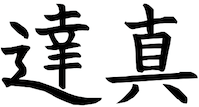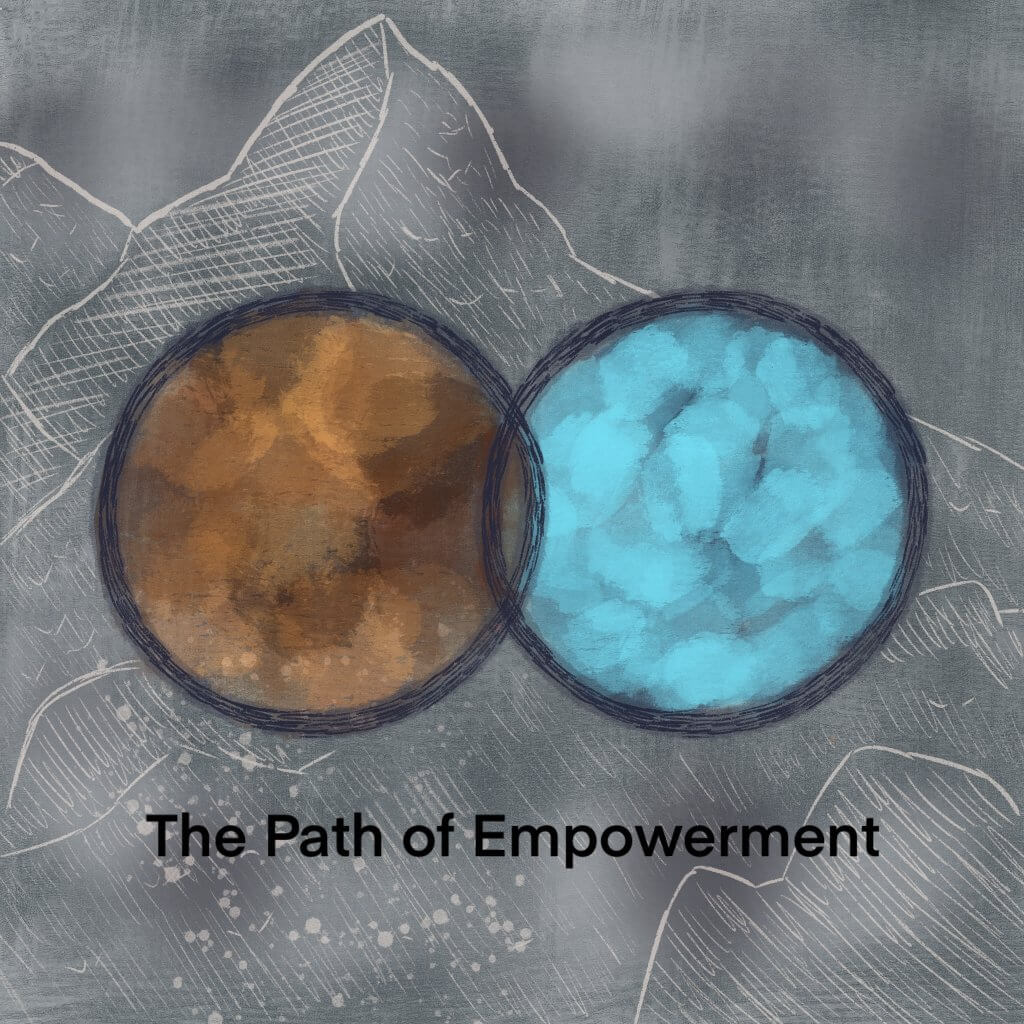Before I took the bodhisattva vows, I was terrified—how could I actually save all beings? Who was I to even think to try to commit to that?
After I took the bodhisattva vows, this terror intensified for a time, but it eventually transmuted into a real, felt question, a live inquiry question, that I took seriously. “How do I actually do it? How do I actually save all beings? How do I do it? How do I really do it?”
Eventually, this became a specific and practical outlook. I aim to optimize for helping as many beings as possible, as deeply as possible. Actually doing this has required me to take into account my own physical and mental health—my sanity and sustainability. And contrary to my expectations and intuitions, it’s also required me to take into account my own preferences, needs, boundaries, longings, goals, dreams, visions.
Service isn’t a burden, it’s not a sacrifice for the sake of the world, it’s a delight and a joy and a blessing for all parties.
With practice and refinement, I’ve made this entire philosophy into a practical, actionable strategy. I intentionally structure my projects to create what I call “maximum deep benefit”: helping as many people as possible, as deeply as possible. I’ve developed an eye for things that compound and benefit as many people as possible, as deeply as possible.
A simple example would be writing a blog post. If I write a blog post on a topic that is of benefit, that will benefit many people for many years. And if I choose my topic well, and execute it effectively – if I play my cards right – there will be compounding effects that have further benefits in turn.

Another example would be recording a podcast with someone. When I record a podcast with someone, it has a host of benefits, including:
- I learn more about them and their projects
- I build or deepen a relationship with my guest
- I learn more about topics I’m interested in; the conversation often answers specific questions I have
- Others (the audience listening) also learns about the person, their projects, and the topics of conversation
- The podcast brings attention to me and my projects
- The podcast brings attention to the guest and their projects
Historically, I’ve used this skill consciously, but the specific ways I’ve done it have been intuitive and subconscious. In this post, I will attempt to make these skills and choices explicit, so that others might learn this skill and benefit their own projects and goals.
In authoring this post, I had a series of conversations with a friend (Valerie Zhang) to try to deconstruct what I’m doing. We discovered there are four overarching levels to my process: values, principles/ mental models, variables, and tactics.
Values
For me, this frame begins with the bodhisattva vows: the vow to save all beings.

The bodhisattva vows can be interpreted in a number of ways, but for the purpose of this post, we will interpret them as expressing a desire to be of service, to aim for what we might call “maximum deep benefit”—helping as many beings as possible, as deeply as possible.
Importantly, helping as many beings as possible necessitates that one does not merely help human beings. Human beings are worthy of love and assistance, but so are non-human beings: the plants, the animals, the insects, even the bacteria and the planet itself. We aspire to help all beings, not just humans.
Practically, this begins with the intention to “do good things.” We start with a clear sense of what is good. Anything that is explicitly related to the Dharma or spirituality is nearly-automatically good, for example, with some notable exceptions (bad actors, poor ethics, etc.). The same is true for anything that is pro-social, pro-environment, broadly.
I also have an implicit list in my head of people that are good, whose actions and projects resonate with me even if they are not explicitly related to something in the automatically-good categories, or even if I don’t really understand their vision and direction quite yet. The guests that I’ve had on my podcast are good examples of people that I think are good, have good projects, and want to help flourish in the world.
“Intrinsic goods” are things that are good in themselves, without needing to be means to other good ends. For example, a good conversation is an end in itself (even if it often has compounding benefits).

Strategic Principles and Mental Models
A number of specific principles and mental models are useful to me in defining and executing on this vision.
- Cynefin: a simple but powerful framework for making sense of problems (see Strategy 101)
- Feedback Loops: systems with causal, iterative loops, where outputs become inputs sustaining a cycle.
- Feedback loops can be positive or negative (good or bad), and they can be growing (getting bigger) or decreasing (getting smaller).
- A beneficial, growing feedback loop is sometimes called a “positive positive feedback loop.”
- “Flywheels” are reliably self-sustaining positive positive feedback loops.
- The thing about feedback loops is that you really need them to feed back. If you want to develop effective, positive positive feedback loops, you need the outputs to become inputs.
- A simple example would be that at the end of my podcast, I ask my guests if they have any feedback for me as a host. If they have good ideas or constructive feedback, I try to implement what they say.
- Another example from fundraising would be to ask your donors if they know anyone else who might be interested in giving money to your non-profit.
- Once you start to look for them, you can see feedback loops everywhere. Then you look for ways to connect them to each other in positive ways. Consider this a take-home exercise to try out. 😉
- Learning about OODA Loops and Boydian maneuver warfare has helped me to improve my ability to structure feedback loops so that they are fast and effective.
- Feedback loops can be positive or negative (good or bad), and they can be growing (getting bigger) or decreasing (getting smaller).
- Conditions / Consequences: rather than trying to aim for specific goals by specific means, cultivating the conditions that will lead to good consequences in most scenarios (see Means-Ends, Conditions-Consequences, and the Game of Risk)
- Second Order Effects: our effects can themselves be causes of further effects. We can study the consequences of our actions, both the first-order impacts but also second- or third-order effects, and learn to act in ways that have beneficia first-, second-, and third-order impacts.
- “Every good thing you do, every good thing you say, every good thought you think, vibrates on and on and never ceases. The evil remains only until it is overcome by the good, but the good remains forever.” —Peace Pilgrim
- Breadth and Depth: breadth is how many beings are benefitted; depth is how much benefit they receive. My (old) intuitions at least would suggest that the broader the impact, the shallower the benefit. But I’ve seen that breadth of impact is not mutually exclusive with depth of benefit, that it’s possible to hit a sweet spot of wide breadth and deep impact.
- Mutual Benefit: Something is win-win if it benefits both parties. Something is win-win-win or omni-win if it benefits all parties, not just the two people in a collaboration.
- Knowledge Transfer: a lot of knowledge and wisdom is implicit expertise. However, it is possible to make this expertise explicit, articulate in words or writing, and to share it as widely as possible—to level the playing field of how widely that knowledge or wisdom is available. My blog and podcast are both ways to surface implicit knowledge and wisdom, and to share it as widely as possible.
- Situational Awareness: situational awareness is a military strategy concept, but it applies to all situations—being aware of what’s happening, and responsive to it.
Variables
There are a number of variables that I try to be aware of and pay attention to:
- Money: do we have enough gas in the tank to get to where we need to go?
- Skills: what skills are needed to complete a project or realize a vision? Do the collaborators on a project have all the requisite skills?
- Attention: attention is a way of thinking about breadth + depth in practice. How many people read a blog post, or listened to a podcast recording? How many people can we benefit deeply?
- Connections to Specific People or Organizations: who would be interested, willing + able to help a specific project or vision? Who would benefit from knowing about it or collaborating with it?
Tactics
Tactics implement the strategies above, operating on the variables above.
I make as many of the projects I work on freely available as possible. Of course, in some cases, it makes sense to charge for something I offer (like if I’m collaborating with someone else, or if there are extensive physical costs for a project, or other similar constraints).
Creative Commons is a wonderful vehicle for sharing what I create freely and widely. I prefer to use non-commercial licenses for anything that is related to the Dharma or spirituality, because the Dharma and spiritual teachings should be free for all.
Because I make much of my content and creations available for free, my life and work are made possible by generosity. I have a Patreon that people can support, as well as ways for people to make one-time gifts or donations. I give every gift I possibly can to the world, and I have found that the world is more than willing to generously support me in doing that.
Over time, I’ve learned to master what I call the Arts of Alliances and Collaboration. With the right collaborators, I’ve found that more is possible together than I could possibly have imagined doing by myself.
The modern internet—and in particular social media and especially Twitter—are critical infrastructure for testing ideas, iterating on them, finding collaborators, publicizing projects, requesting assistance, and more.
U might also enjoy reading the book I wrote on empowerment with my collaborator Mary Bajorek, The Path of Empowerment.
Further Reading:
- Strategy 101: An Introduction to Power
- The Art of Alliances
- The Art of Collaboration
- The Strategic Theory of John Boyd
Thank you to Sílvia Bastos, Eric Chisholm, and Brandon Toner for the conversations that inspired this post. Thank you to Valerie Zhang for taking the time to speak with me about this topic to reverse engineer this skill, and for creating an outline with me.
The art in this post was created by Sílvia Bastos, and is licensed under a CC BY 2.0 license. You can support her work on Patreon.

